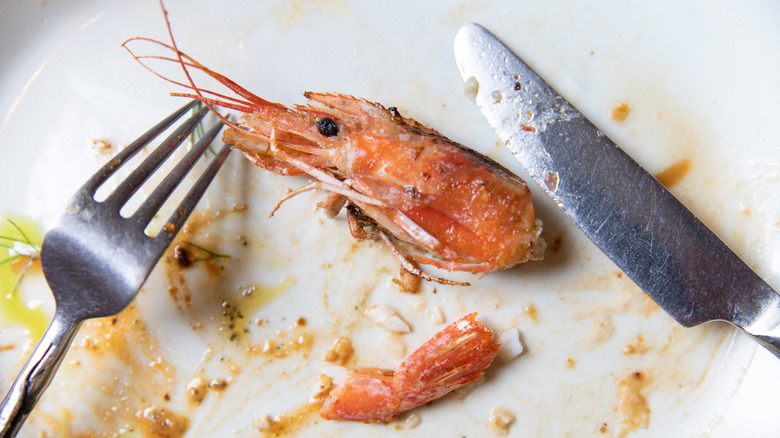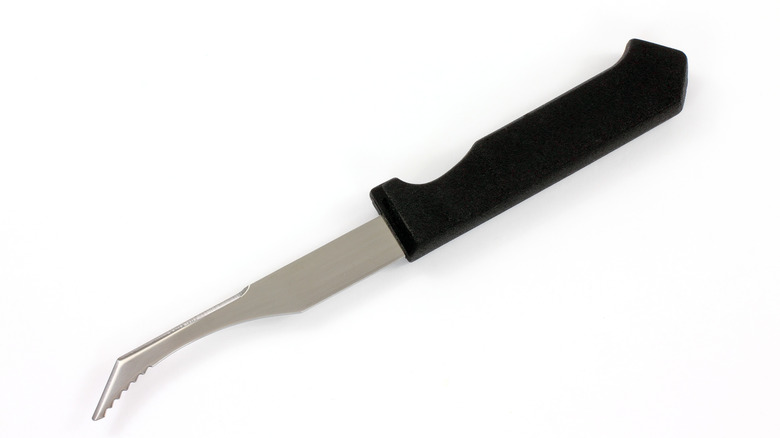Hey there, seafood lovers! I’ve been cooking shrimp for years, and I know how confusing those dark lines in shrimp can be. Let me break down everything you need to know about shrimp “veins” in simple terms.
What Are Those Dark Lines in Shrimp?
Lemme tell ya – those aren’t actually veins at all! This is a super common misconception that I used to believe too. Here’s what they really are:
- The dark line on top = Digestive tract (sometimes called the sand vein)
- The dark line on bottom = Nerve cord
Should You Remove Both Lines?
Here’s the deal:
Top “Vein” (Digestive Tract)
- Always remove this one!
- Contains digestive waste (yeah, it’s poop)
- Can make shrimp taste gritty
- Easy to remove with a deveining tool or knife
Bottom “Vein” (Nerve Cord)
- Not necessary to remove
- Doesn’t affect taste
- Totally safe to eat
- More hassle than it’s worth to remove
How to Properly Devein Shrimp
I’ve deveined thousands of shrimp in my kitchen and here’s my foolproof method
- Peel the shrimp (if not already peeled)
- Make a shallow cut along the back (top) of the shrimp
- Look for the dark digestive tract
- Use the tip of your knife to lift it out
- Rinse under cold water
- Pat dry before cooking
Pro Tips from My Kitchen
- Bigger shrimp = more visible “veins”
- Fresh shrimp might have clearer digestive tracts
- Some frozen shrimp come pre-deveined (check the package!)
- Don’t stress about perfect deveining – a little bit left won’t hurt
Common Questions I Get About Shrimp Veins
Does leaving the vein in make you sick?
Nope! While not appetizing the digestive tract isn’t harmful if eaten. But removing it improves taste and texture.
Why do some recipes say deveining is optional?
For smaller shrimp, the digestive tract might be barely noticeable. In these cases, many cooks skip deveining to save time.
Can I eat raw shrimp after deveining?
I wouldn’t recommend it! Always cook shrimp thoroughly, deveined or not.
Best Practices for Buying and Preparing Shrimp
When Buying:
- Look for firm, translucent meat
- Avoid shrimp with black spots or dry edges
- Consider pre-deveined if you’re short on time
- Fresh isn’t always better – good quality frozen shrimp work great
Storage Tips:
- Keep fresh shrimp on ice
- Use within 2 days of purchase
- Store cleaned shrimp in an airtight container
- Don’t refreeze thawed shrimp
My Final Thoughts
After years of cooking shrimp, I can tell ya that deveining doesn’t have to be complicated. Focus on removing that top digestive tract, and don’t sweat the bottom nerve cord The key is to keep it simple and not get too caught up in perfection.
Remember, practice makes perfect! The more shrimp you devein, the faster and better you’ll get at it. And hey, if you’re really not into deveining, there’s no shame in buying pre-deveined shrimp – I do it myself when I’m in a hurry!

Should you leave the head on?

The shrimp head is full of delicious shrimpy taste and brings a depth of flavor to hearty dishes that give you full permission to put your elbows on the table, dig your hands into your bowl, and suck the juices out. If you are from a region where lip-smacking gumbo is featured on the table more often than not, this isnt even a question that arises. Of course, you should leave the head on.
But there are some caveats here. In a raw shrimp, the head contains enzymes that immediately begin the decaying process once the shrimp dies. A head-on fresh shrimp has a very short shelf-life and should be sold, cooked, and eaten within days of its catch. Most of the IQF (and even the fresh shrimp) sold in the U.S. has the head removed to prolong the freshness and edibility of the shrimp.
And not everyone wants to dine with their dinner staring up at them. Its essential to gauge the diners at your table to see if they might be okay when confronted with eyes and a face. Another consideration is the quality of the cook when a head is left on. For preparations that take a long time, cooking with the head on can lead to a mushy shrimp. Fat in the head releases and gives a remarkable taste (but a noticeable texture). Go headless if you like a nice bite and a lean final product.
Do shrimp deveiners work?

If you are a big fan of acquiring every kitchen tool imaginable, a shrimp deveiner might work best for you. A shrimp deveiner is a thin plastic tool with a curve at the tip. The curve makes it easy to slide the device into the vein for removal. Multitasking shrimp deveiners can peel and devein at the same time.
To use a simple shrimp deveiner, peel the shrimp, then hold it with its back facing up. Insert the tool into the head end of the shrimp, right along the vein. Apply pressure and run the deveiner along the shrimps back, from head to tail. The flesh should separate, exposing the vein. When you reach the tail, the vein should lift out easily.
A deveiner designed to remove the shell works similarly — without first peeling the shrimp. This is the tool to use if you frequently cook peeled and deveined shrimp for a crowd. Its safe and makes quick work of large amounts of shrimp. If you only eat shrimp on special occasions (and you like the large ones), save yourself $5 and use a different method.
But, whether you peel with a toothpick, shears, a knife, or a deveiner tool, keep hygiene a priority. Rinse and pat shrimp dry when the deveining is done.
